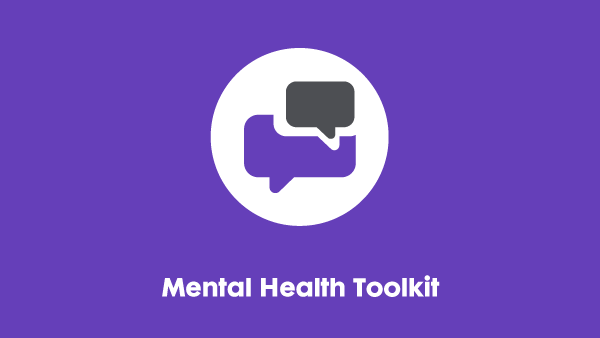Last updated: 23 April 2025
Factsheet – Long COVID
What is long COVID?
Long COVID is a new condition. The diagnosis is for individuals who have ongoing symptoms 12 weeks after an initial COVID-19 infection has passed.
For some people, the ongoing symptoms are relatively mild; whereas, for others, they are severe. Some individuals will have a few symptoms, but others will have several.
The medical profession is continually learning about COVID and long COVID and making discoveries daily.
What we do know is:
- The symptoms can be varied and change over time for the individuals involved.
- COVID can cause long-term damage to vital organs. For example, COVID scarring on the lungs can cause severe long term breathing problems.
- Research by Imperial College London found that women are more likely to develop long COVID than men. In addition, smoking, obesity, hospital admission for COVID, and living in deprived areas are known risk factors of developing long COVID. The risk of long COVID also increases with age.
- The severity of the initial COVID infection does not appear to have any bearing on whether a person develops long COVID.
- It can affect anyone regardless of previous health or fitness status. There are cases of very fit people with no underlying health conditions developing debilitating long COVID.
- Recovery times are also unpredictable, with increasing numbers of people having symptoms for more than one year.
- Recovery can fluctuate and be slow.
- Treatments are currently based on managing symptoms as there is no one treatment.
- There is no one test for long COVID. Instead, diagnosis relies on clinical examination, medical history, and exclusion of other causes.
What causes long COVID?
What causes some people to develop long COVID remains unclear, but many theories are currently being researched. Understandably with such a new condition, there are more questions than answers, which is likely to continue for some time.
Recent research from Imperial College London in January 2021 estimated that in England, over 2 million adults (one in 20 people) have had, or continue to have, long COVID.
COVID symptoms are classified into three main groups:
- acute stage – This is when a person first contracts the virus and is infectious. Most people will recover fully within four weeks.
- ongoing symptomatic COVID – This is where a person’s symptoms continue for more than four weeks from the acute stage of the infection.
- post-COVID syndrome or “long COVID” – These are the interchangeable terms used to describe cases where a person’s symptoms have been ongoing for at least 12 weeks after the initial acute COVID infection phase.
How does long COVID affect an individual?
Long COVID affects people in different ways and for undetermined lengths of time. The symptoms can also vary as the condition progresses. Many people may have several symptoms simultaneously, and the accumulative effect of this should also be taken into account.
The National Institute for Health and Care Excellence (NICE) has compiled a list of the most commonly known symptoms of long COVID. You can view this list by on the NIHR website. As this is a new condition, the list may change.
The symptoms they include are:
Generalised symptoms
- Fatigue
- Fever
- Pain.
Respiratory symptoms
- Breathlessness
- Cough.
Cardiovascular symptoms
- Chest tightness
- Chest pain
- Palpitations.
Neurological symptoms
- Cognitive impairment (‘brain fog’, loss of concentration or memory issues)
- Headache
- Sleep disturbance
- Peripheral neuropathy symptoms (pins and needles and numbness)
- Dizziness
- Delirium (in older populations).
Gastrointestinal symptoms
- Abdominal pain
- Nausea
- Diarrhoea
- Anorexia and reduced appetite (in older populations).
Musculoskeletal symptoms
- Joint pain
- Muscle pain.
Psychological/psychiatric symptoms
- Symptoms of depression
- Symptoms of anxiety.
Ear, nose and throat symptoms
- Tinnitus
- Earache
- Sore throat
- Dizziness
- Loss of taste and/or smell.
Dermatological symptoms
- Skin rashes.

Potential impact on work
Long COVID is likely to affect organisations directly and indirectly.
Many employees will need temporary and straightforward adjustments as they continue to recover. Some employees will be absent from work due to the severity of their symptoms, which may be for several months.
Others will need slow and gradual returns to their jobs. Most adjustments will likely be temporary, but occasionally, there will be a need to consider permanent changes to roles for those with long COVID.
Some employees will need support through adjustments such as flexible working if they are now also carers for someone with long COVID.
NHS resources and processes to assess and support people with long COVID vary considerably within the UK. In England and Northern Ireland, specialist long COVID assessment centres are being set up. In Wales and Scotland, it will be the responsibility of GPs to look after the individual and refer them to symptom-specific specialists such as respiratory specialists for breathing problems.
Legal duties
Long COVID is not explicitly mentioned in the Equality Act 2010, but this does not mean that some employees would not be covered. The definition of a disability under the Act uses severity and duration as the essential requirements. We are starting to see significant numbers of people with long COVID and people who have had underlying health conditions exacerbated by COVID.
It may be wise for businesses to treat long COVID as a disability and provide adjustments to employees accordingly. Firstly, to protect and maintain their workforces so that employees can continue to do their job as far (where workplace adjustments allow them to continue working) and to allow them to return to work (if long COVID has prevented them from working).
Secondly, because there may be legal risks involved in failing to provide adjustments. The question of whether an employee is covered by the protections of the Equality Act 2010 is only definitively answered in a tribunal, and so far, this route is untested for long COVID. It may well be that an employee could successfully claim that denying them ‘reasonable adjustments’ to remove barriers associated with their long COVID is in breach of the Equality Act 2010.
The Equality Act 2010
In the UK, employers have duties to:
- prevent discrimination, and
- provide reasonable adjustments
for their disabled employees. This means that it is unlawful for employers to treat applicants, job candidates and employees unfavourably because of their disability.
The Equality Act also requires employers to make ‘reasonable adjustments’ for their disabled employees.
Definition of disability
The Equality Act 2010 defines a disability as a ‘physical or mental impairment’ that ‘has a substantial and long-term adverse effect’ on a person’s ‘ability to carry out day-to-day activities.’
‘Long-term’ generally means lasting 12 months or longer, though there are some exceptions. It also includes fluctuating conditions, where the ‘adverse effect’ may not be felt for some of the time.
A disability can be covered by the Equality Act if it hasn’t lasted 12 months but could reasonably be expected to. That definition can mean that employers are required to make adjustments before the 12 month period, if the condition could reasonably last longer. As long COVID is a new condition, it is unclear whether this duty will apply. However, there is a possibility that it could be found to apply as new information emerges.
Suggested adjustments
The symptoms of long COVID will fluctuate in nature and severity for most people as the condition progresses. For example, a person may start with breathing problems that begin to improve, but the person then develops joint pain, fevers and anxiety.
General
- Consider counting absence due to long COVID – and other disabilities – separately from other sickness absences. Refer to occupational health for advice if it is likely someone may be away from work with a long-term absence. Occupational health is likely to be very busy with similar referrals, and so early referral is advised.
- Allow employees time off to attend assessments and treatments related to long COVID. However, where there is no ‘one-stop-shop’, this may mean several appointments with different specialists initially.
- Allow employees with long COVID time to carry out exercises or mental health strategies. This will likely benefit the employee on their return to work.
- Be flexible on working hours and locations, including at short notice, where possible. This will reduce much of the pressure and fatigue reported by many with long COVID. In addition, being able to work from home some days or starting work later to do their physio exercises before work and find a seat on public transport are helpful adjustments for many.
- Giving employees regular shifts with plenty of notice. This can help them manage fatigue.
- A gradual increase in hours and duties and ensuring that employees with long COVID do not work excessive hours or over breaks. Pacing their work is a crucial strategy for recovery.
- Providing employees with a suitable workstation. After lockdown, all employees returning to the workplace should do refresher DSE (display screen equipment) training and assess their workstations. This is especially important for anyone who has any symptoms and should be done promptly on their return to work. A review of home working set-ups may also be beneficial. A suitable workstation, especially if desk-based, can significantly reduce the risk of a flare-up of many symptoms associated with long COVID.
- In some cases, a personal emergency evacuation plan (PEEP) may be required. Safety professionals in large organisations can advise on this. For smaller organisations, the provides further information.
Regular review of adjustments and needs are always important. This is especially the case with long COVID and how it can affect different parts of the body at various times. Many individuals with long COVID may need several further adjustments during their recovery.
Make sure that employees with adjustments regularly review their adjustments with their manager and any other relevant people.
Musculoskeletal symptoms
- Employees with musculoskeletal symptoms may need adjustments to their work patterns and a private place to allow them to do therapeutic exercises. Movement is essential for keeping joints and muscles healthy and strong. An individual is likely to be encouraged to stay active by their health team. This can often be achieved by taking regular, short walks such as to a printer or water dispenser. Having time and privacy to carry out any exercises prescribed by physiotherapists can also aid recovery.
- For those with severe pain and fatigue when walking, a change of workstation to a position closer to an exit or the toilet facilities can be very helpful. Access to cupboards additional time allowances to walk to different areas may also be beneficial.
- A full workstation assessment should be completed if desk-based and any adjustments implemented promptly. This includes training and stressing the need for regular position changes to prevent discomfort.
- Access to parking spaces near the entrance to a building may be required even if the person does not qualify under the Blue Badge system. Some employees and customers may only need to use this when their symptoms are severe.
Gastrointestinal symptoms
- It may be that a person requires frequent and quick access to toilet facilities, which should be accommodated. This may mean moving their workstation closer to these facilities.
- If they have a long commute or have to travel for business reasons, adjustments may need to be implemented to avoid this or make it easier. For example, looking at the times of day that travel is required, the mode of transport, or if the journey can be avoided by having online meetings or phone calls instead.
- Just as with other gastrointestinal conditions, some people may benefit from eating at regular times to help keep their symptoms under control.
For more information, please see the factsheet on inflammatory bowel disease.
Neurological symptoms
- If the employee is experiencing ‘brain fog’ or difficulties with concentration and memory, encourage staff to carry a notebook and pen to record information from ‘corridor conversations’ or send them a follow-up email with the key information in bullet points. There are also some good phone apps that can also help with this.
- Having a ‘to do’ list either on paper or digital.
- Breaking up tasks into small steps will help with concentration
- Letting them work in small time slots and build up to healthy work periods as able.
- Pacing work can help a person maintain build and maintain good levels of concentration during the day. However, they should not work late or through breaks to catch up as this can cause fatigue.
- For staff experiencing pins and needles or tingling, they should take time to prevent or relieve their symptoms. This may include regular short walks or prescribed exercises.
- For those who experience headaches or migraines, a change to the lighting levels in their work area may be needed. A desk lamp or access to natural light may be helpful, as may be having access to blinds on windows. Frequent breaks from screen work may also be beneficial. For more information, please see our factsheet on Migraines.
Cognitive challenges – ‘Brain fog’, difficulties with concentration and memory, and frustration will be familiar to most people who have a neuro-minority label, such as dyslexia. However, many neurodiversity strategies will help those who are experiencing similar symptoms due to long COVID. For more information on useful strategies, please see the Neurodiversity Toolkit.
Symptoms affecting breathing
Chest tightness or shortness of breath can be frightening as well as exhausting.
Certain weather conditions can often increase breathing difficulties for those with respiratory illnesses. This is likely to be the same for those who have COVID-related breathing symptoms with their long COVID. In addition, sudden temperature fluctuations and humid conditions are known to cause a worsening of symptoms.
Some adjustments that may be necessary for people experiencing symptoms of long COVID that affect their breathing are:
- Employees and customers may need access to seats so they can rest and recover if they become symptomatic.
- Providing desk fans
- Working from home on very humid days
- Time allowances for slower walking speed
- time and privacy for people who may also need to take medication regularly during the day to relieve their symptoms.
Psychological and psychiatric
Long COVID is a new condition with little still known about how long it will affect individuals, both mentally and physically. One common fear people with long COVID have is whether they will make a full recovery.
As well as many of the symptoms being very challenging and worrying in themselves, the fear of the unknown, frustration at being ill (especially in previously very fit and active individuals) is often very frightening. It is therefore unsurprising that anxiety and depression are common symptoms in this condition.
The regular adjustments for supporting staff who are experiencing mental ill-health should apply. These include:
- time off for treatment appointments
- time-out short sessions if they feel their anxiety increasing, for example
- a stress risk assessment to try to alleviate any known work-related triggers
More information on supporting employees’ their mental health can be found in our Mental Health Toolkit.
Further information
Many of our resources cover adjustments that may be useful for supporting staff with specific symptoms of long-COVID. For example, our factsheet on vertigo has relevant suggestions for those with dizziness. You can view this factsheet here.
For more information on suggested adjustments, specific barriers for long COVID and information about the law, please see our other resources in the Knowledge Hub.
Advice Service
For more detailed information and advice about a specific situation, contact the Advice Service: Tel:+44-20-7403-3020 |Textphone: +44-20-7403-0040
Email: advice@businessdisabilityforum.org.uk
NHS
The NHS has a dedicated website with information and advice for people recovering from COVID-19.
You can view it here: yourcovidrecovery.nhs.uk
If you require this content in a different format, contact enquiries@businessdisabilityforum.org.uk.
© This resource and the information contained therein are subject to copyright and remain the property of the Business Disability Forum. They are for reference only and must not be copied or distributed without prior permission.


